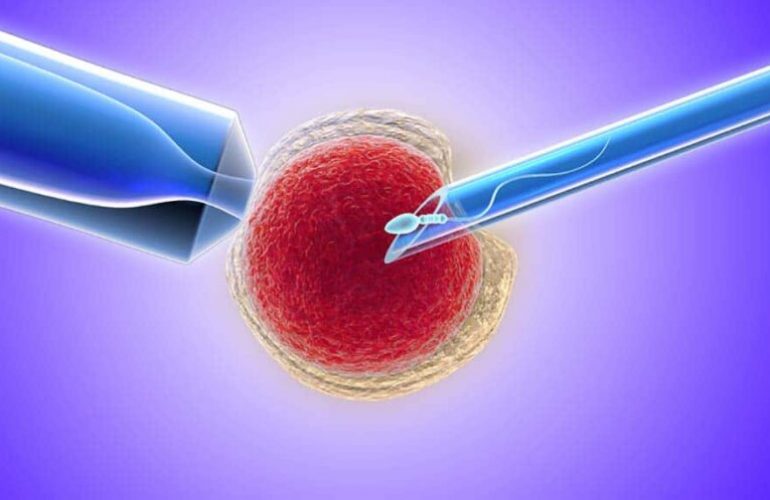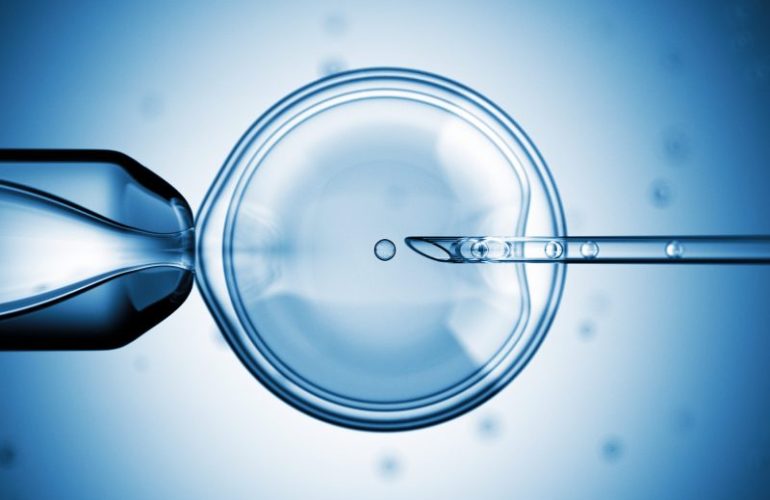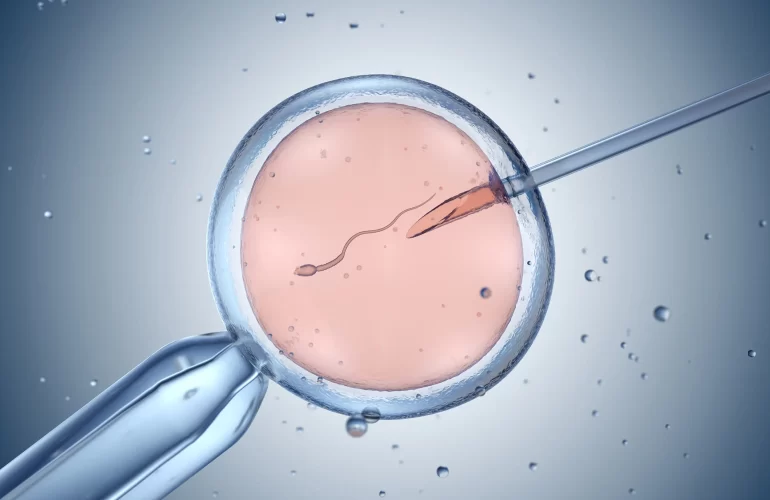Cramping And Spotting: What To Expect After Embryo Transfer
Embryo transfer is a crucial step in the In-Vitro Fertilization (IVF) treatment process. It involves transferring the embryo(s) into the uterus, and it can cause some physical symptoms in the days following. Cramping and spotting are two symptoms commonly experienced by women after undergoing an embryo transfer.
Symptoms After Embryo Transfer: Cramping
Cramping is a common symptom following an embryo transfer. The cramps can range from mild to severe and may feel similar to menstrual cramps. It is essential to note that mild cramping is normal, but severe cramping may require medical attention. If you experience any discomfort that is unbearable, it is best to consult your healthcare provider immediately. The cramping may be due to the physical manipulation of the cervix during the transfer process, or it may indicate implantation.
Symptoms After Embryo Transfer: Spotting
Light spotting after an embryo transfer is common and usually lasts for around two to three days. Spotting may vary from red to brown, and it can be a sign of implantation. However, heavy bleeding is not a good sign. If you experience heavy bleeding or clotting, it may indicate that the procedure was unsuccessful. Spotting does not necessarily mean a failed implantation, but it is always best to consult your healthcare provider to rule out any complications.
| Possible Causes of Cramping and Spotting After Embryo Transfer | What You Can Do |
|---|---|
| Implantation | Rest and take it easy. Avoid strenuous activities and maintain a healthy diet |
| Physical manipulation of the cervix during transfer | Use hot water bottles or heating pads to ease discomfort. Avoid sexual intercourse and strenuous activities |
| Hormonal changes due to IVF medications | Stay hydrated and maintain a healthy diet. Avoid alcohol and smoking |
Ultimately, the symptoms experienced after an embryo transfer will vary from woman to woman. It is important to take note of any unusual signs or symptoms and to consult your healthcare provider immediately. In most cases, mild cramping and spotting are normal symptoms, but severe symptoms may indicate a complication that requires medical attention.
Common Physical Symptoms After Embryo Transfer
If you’ve recently undergone in-vitro fertilization (IVF), you may experience some physical symptoms after embryo transfer. This is completely normal and should not be a cause for concern. In fact, experiencing some or even all of the symptoms can be a sign that your body is responding well to the treatment. Here are some of the most common physical symptoms that you may experience after embryo transfer:
- Cramping: Mild abdominal cramping is a common symptom after embryo transfer. It’s usually caused by the process of implantation, as the embryo attaches itself to the uterine lining. The cramping is usually mild and should subside within a few days.
- Spotting: Some women may experience light spotting or bleeding after embryo transfer. This is usually caused by hormonal changes in the body and is not a cause for concern. If you experience heavy bleeding, however, you should contact your doctor immediately.
- Bloating: Bloated sensation and abdominal discomfort are also common after embryo transfer. This is usually caused by the medications used during IVF as well as the increased levels of hormones in the body.
If you experience any of these symptoms after embryo transfer, it’s important to take it easy and avoid any strenuous activity. Resting and staying hydrated can help your body recover more quickly and reduce any discomfort you may be feeling. It’s also a good idea to follow your doctor’s advice and avoid any medications or supplements that he or she may have recommended.
| When to Call Your Doctor | Symptoms to Look Out For |
|---|---|
| Heavy bleeding | Severe abdominal pain |
| Fever or chills | Painful urination |
| Difficulty breathing | No symptoms at all (some women may experience no symptoms after embryo transfer, which is also completely normal) |
If you experience any of these symptoms, it’s important to contact your doctor right away. While most physical symptoms after embryo transfer are normal and nothing to worry about, some may be a sign of a more serious condition. Your doctor can help you determine if any action needs to be taken.
In conclusion, experiencing physical symptoms after embryo transfer is completely normal and usually a sign that the treatment is working as it should. If you experience any discomfort, take it easy and follow your doctor’s advice. And if you experience any of the symptoms listed above, don’t hesitate to contact your doctor right away.
Understanding The Role Of Progesterone İn IVF Treatment
When it comes to in vitro fertilization (IVF), there are many factors that play a role in whether or not the procedure will be successful. One of those factors is the use of progesterone during treatment. Progesterone is a hormone that is naturally produced by the ovaries, but during IVF, it is often given in supplemental form. In this article, we will discuss why progesterone is used in IVF treatment and the role it plays in the success of the procedure.
Progesterone is essential for preparing the uterine lining for embryo implantation. During a natural menstrual cycle, progesterone levels rise after ovulation to create an environment that is hospitable for a fertilized egg to implant. In an IVF cycle, the goal is to increase the chances of successful implantation by simulating this natural process. This is done by taking progesterone supplements to increase the levels of the hormone in the body.
| Benefits of Progesterone in IVF Treatment | Drawbacks of Progesterone in IVF Treatment |
|---|---|
|
|
While progesterone is generally considered to be safe, there are some potential drawbacks to using it in IVF treatment. For example, progesterone may mask underlying fertility issues by thickening the uterine lining, making it difficult to evaluate the true state of the ovaries or fallopian tubes. Additionally, progesterone supplements may increase the risk of blood clots or breast cancer in rare cases.
Despite these potential drawbacks, progesterone is an essential part of IVF treatment. Without it, the chances of successful implantation and pregnancy are significantly reduced. If you are undergoing IVF treatment, your doctor will determine the appropriate dosage and timing of progesterone supplements for you. Be sure to discuss any concerns or questions you may have about the role of progesterone in your treatment plan.
Potential Reasons For Failed Embryo Implantation
Potential Reasons For Failed Embryo Implantation
Embryo transfer is a critical step in the in vitro fertilization (IVF) process. After the transfer, the woman must wait for two weeks to determine whether the procedure is successful. Unfortunately, some women get a negative pregnancy test. While a negative result can be disheartening, it’s important to understand that post-embryo transfer symptoms vary. In most cases, failed embryo implantation could be due to numerous underlying factors.
Few of these reasons are:
| Factors | Possible Reasons |
|---|---|
| Lifestyle | Environmental toxins, smoking, and excessive alcohol consumption can decrease the chances of a successful embryo implantation. Additionally, an unhealthy diet, lack of exercise, and stress can also affect implantation. |
| Uterine issues | Fibroids or polyps in the uterus lining can prevent implantation. Additionally, a weakened cervical muscle can allow the egg to slip out of the uterus before implantation can occur. |
| Genetics | Since unsuccessful embryo implantation can also arise from genetic issues which lead to chromosomal abnormalities in embryos, couples can opt for pre-implantation genetic testing (PGT) to screen for such abnormalities before they implant. |
It’s important for couples to communicate with their fertility specialist regarding any doubts they may have after the embryo transfer process. Together, they can determine the right treatment protocol and identify any underlying issues that could be hampering the chances for a successful pregnancy.
Frequently Asked Questions
1. What should I expect in terms of cramping and spotting after embryo transfer?
It is common to experience mild cramping and spotting after embryo transfer, and this is usually nothing to worry about. Your doctor will provide you with advice on how to manage these symptoms.
2. What other physical symptoms can I expect to experience after embryo transfer?
Other physical symptoms that are common after embryo transfer include bloating, breast tenderness, and fatigue.
3. What is the role of progesterone in IVF treatment?
Progesterone is an essential hormone in IVF treatment, as it prepares the uterus for embryo implantation and helps to support the early stages of pregnancy.
4. What are some potential reasons for failed embryo implantation?
Some potential reasons for failed embryo implantation include problems with the embryo, issues with the uterine lining, and problems with the embryo transfer procedure itself.
5. How can I prepare myself for a successful embryo transfer?
To prepare yourself for a successful embryo transfer, you should take steps to optimize your overall health and well-being, including maintaining a healthy diet, exercising regularly, reducing stress, and getting enough sleep.
6. What are some potential options if my embryo transfer is not successful?
If your embryo transfer is not successful, there are several options available, including trying another cycle of IVF with improved treatment methods, using a donor egg or sperm, or exploring alternative methods of family-building such as adoption.
7. How soon can I take a pregnancy test after embryo transfer?
You should wait at least 10 to 14 days after embryo transfer to take a home pregnancy test, as this is the amount of time necessary for pregnancy hormones to build up in your system and produce an accurate result.



